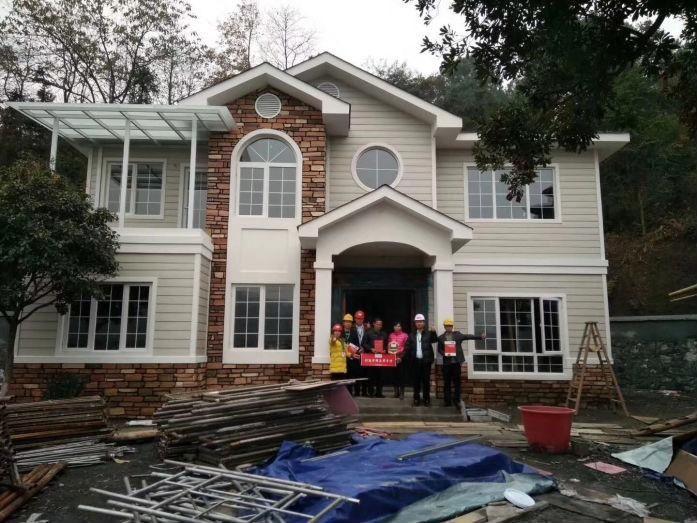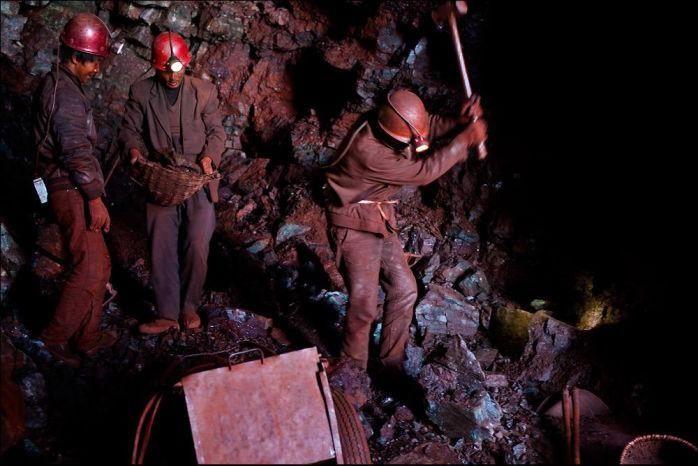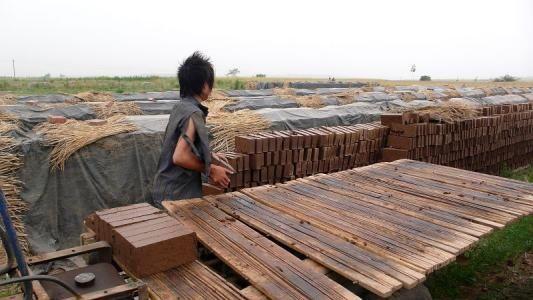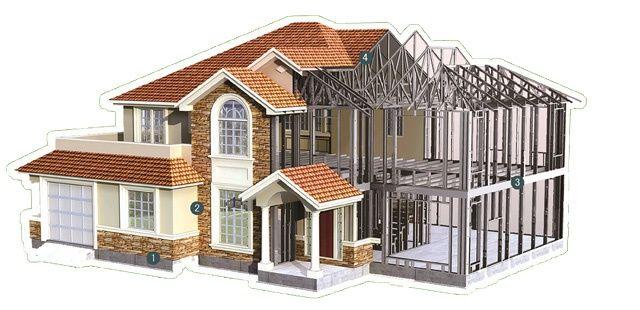

 2025-09-02
2025-09-02
Recently, a video of "Don't buy a house anymore, 300,000 villas are out" exploded Moments, causing large and small media platforms to reprint; according to incomplete statistics, this video of Dingrong's family attracted tens of thousands of reposts on the Internet, and the cumulative reading volume reached more than 100 million times. What kind of strange things can spread quickly all over the streets and widely spread in a viral situation? Reflecting the current people's high attention to housing information, the editor also made a deep understanding of Dingrong's light steel villa.
Light steel construction has entered China for half a century, but it has not shown a good momentum of development. However, since 2017, friends who have been paying attention have found that many beautiful light steel villas have suddenly emerged around them. Why has the light steel construction industry, which has been tepid, suddenly gained a sense of presence? Why have light steel villas been able to sweep across the country?

Why is light steel construction not widely used in China?
1. Steel production capacity could not meet the national conditions at that time
Light steel houses entered China in the 1960s and 1970s, but at that time, the founding of New China was still short, steel production capacity was limited, and China's industrial and military industries were still unable to meet demand. There was no excess steel to be used in national production and life.

2. Not cost-effective
In the 1960s and 1970s, self-built houses were mainly made of adobe bricks and clay kiln bricks, and houses were usually made of local materials; bricks and tiles were fired independently, which was convenient to obtain materials and low in cost. At that time, there was a large number of cheap labor in China, and the comprehensive construction cost was low, which was in line with the social environment at that time. Rare things are more expensive, and scarce steel resources cannot guarantee a large supply. Light steel buildings were not cost-effective at that time.

Why did light steel buildings begin to be accepted?
1. Steel overcapacity, supply-side structural reform is advancing
With the rapid development of China's economy, steel production capacity is rising, data show that in 2013 our country crude steel production of 779 million tons, accounting for 48.5% of the global output, ranking first in the world. 2015 China Iron and Steel Association data show that the national steel enterprises main business loss of more than 60 billion yuan, plus exchange losses increased significantly, the steel industry into a comprehensive loss situation, steel into the era of cabbage prices.

2. Environmental pressure
The most basic needs of human survival are environmental resources, including air, water, and land. The upstream raw materials for clothing, food, housing, and transportation are used to ensure human survival and social development. With the rapid development of industrialization and urbanization, environmental pollution has become increasingly serious, and environmental protection has begun to be taken seriously by the state and the whole people; people have begun to realize that social development at the cost of destroying the environment is unsustainable, and the cost of governance and restoration of the environment has increased exponentially. MIIT statistics show that in 2012, our country produced 1.50 billion tons of construction waste, and 375,000 acres of land needed to be landfilled, equivalent to 38 West Lakes. The resulting air, water, and soil are seriously polluted. In addition, since the average lifespan of concrete buildings in our country is only 30 years, it will also bring huge waste of resources. Mass production, mass consumption, and a large number of abandoned traditional building models are no longer in line with current development needs. The recycling rate of light steel buildings is over 90%, which greatly reduces the problem of resource waste and environmental pollution. It is a real green building and is in line with sustainable development strategies.
3. National policy promotion
In 2006, the "Decision of the State Council on Strengthening Energy Conservation Work" emphasized the closure of brick and tile factories.
On April 17, 2010, the Ministry of Housing and Urban-Rural Development issued the "Technical Regulations for Light Steel Structure Residential Buildings" JGJ209, which comprehensively and systematically stipulates the functions and performance of light steel structure residential buildings, and formulates the material standards, design, construction and acceptance technical requirements, as well as the use and maintenance of light steel structure residential buildings.
In 2011, a series of documents emphasizing energy-saving and environmentally friendly buildings in the "Twelfth Five-Year Plan" comprehensive work plan for energy conservation and emission reduction, and many governments introduced subsidy policies.
On November 4, 2015, the State Council executive meeting emphasized green building materials and referred to the steel structure building pilot.
On November 14, 2015, the Ministry of Housing and Urban-Rural Development's "Outline for the Modernization of the Construction Industry" clearly stated that by 2020, prefabricated buildings will account for more than 20% of new buildings.
In 2025, prefabricated buildings will account for more than 50% of new construction.
In 2016, the "18th National Congress" finally determined that by 2025, prefabricated buildings will account for more than 30% of new buildings.
In 2017, the Hunan Provincial Department of Housing and Urban-Rural Development set a target of 30% of prefabricated buildings in newly built houses by 2020.
Rising raw material prices under environmental pressure
With the implementation of environmental protection policies, brick and tile factories have been shut down, river sand fishing has been restricted, cement and steel production has been limited, and the supply and demand relationship of raw materials upstream of construction has begun to change.
red brick
In 2017, red bricks, which used to be more than 20 cents, were even sold for more than 1 yuan in some areas of Hainan. In most areas, between 40 cents and 6 cents, a brick was even difficult to find in many areas. Looking at the differences between different regions, red bricks, the most used material in construction, rose by 40% to 50% year-on-year.
river sand
In some areas of Hunan, the price of river sand commonly used in construction has risen from 35-40 yuan/square meter last year to 120-130 yuan/square meter, an increase of 300% compared with 2016. In addition to factors such as geographical location, river sand origin, and transportation costs, some areas vary even more.
steel
Since 2016, steel prices have gradually risen. As of September 5, 2017, the national price of rebar was 4316 yuan/ton, an increase of 63.67% year-on-year.
With the rising prices of building materials, the cost of self-built housing alone increased by 35% -40% at the beginning of 2017 and the end of the year. In addition, the labor price has been in a sharp increase channel in the past two years, which means that a 300-square-meter house can be built at the beginning of the year. More than 300,000 yuan can now be built, and the comprehensive cost of brick and concrete has risen from 800-1100 yuan/square meter to 1100-1300 yuan.
4. The excellent performance of light steel houses

Sound insulation performance: 60dB
Insulation performance: The use of double insulation avoids the "cold bridge" phenomenon of the wall, and the energy saving can reach 65%.
Comfort: The wall adopts a high-efficiency energy-saving system, has a breathing function, and can adjust the indoor humidity
Durability: The structural keel is made of high-strength galvanized steel of the American G90 standard
Seismic resistance: The light steel structure skeleton and the internal and external maintenance plates are connected by galvanized self-tapping screws to form a very strong structural system, which has better resistance to earthquakes and horizontal loads, allowing residents to rest easy in the face of unpredictable earthquakes and natural disasters.
Wind and snow resistance: The light steel structure has good integrity, can withstand basic snow loads of more than 1,55KN/m ', and can withstand hurricanes of more than 70 meters per second.
Anti-insect ant: The light steel structure is made of galvanized steel, and the maintenance plates are not eroded by pests such as termites. It is suitable for construction in various regions, greatly reducing maintenance costs.
High efficiency: Both production, logistics, installation and quality control are standardized, highlighting the advantages of high efficiency. Under normal circumstances, a house can be completed in only 30 days, and the installation cycle is greatly shortened compared to traditional buildings.
Recyclable: The main body of light steel can be recycled 100%, and the collection rate of other supporting materials can also reach 85%, which greatly reduces the waste of housing replacement, and truly achieves recycling and green environmental protection.
Housing yield: Since the walls of light steel houses are filled with fiberglass wool, the wall thickness only needs half of that of traditional houses to achieve better thermal insulation performance than traditional houses; it greatly reduces the occupied area of the structure, and the housing yield of light steel buildings is more than 90%, which is 10% higher than that of brick and concrete, which means that a house with a construction area of 300 square meters has a brick and concrete use area of 240 square meters, while the light steel building use area can reach 270 square meters, which is more than 30 square meters more than that of brick and concrete.
Architectural shape: Light steel structures can easily achieve a variety of complex shapes, meeting the needs of various architectural styles. The high-grade and diverse architectural appearance has been highly praised by users.
The characteristics of light steel buildings, coupled with the limitations of traditional buildings, the comprehensive cost of light steel buildings is actually comparable to that of brick and concrete. Users choose light steel buildings not only to save time and strength, but also to have a beautiful and personalized appearance. At the same time, they enjoy the main 50-year long-term quality assurance service.